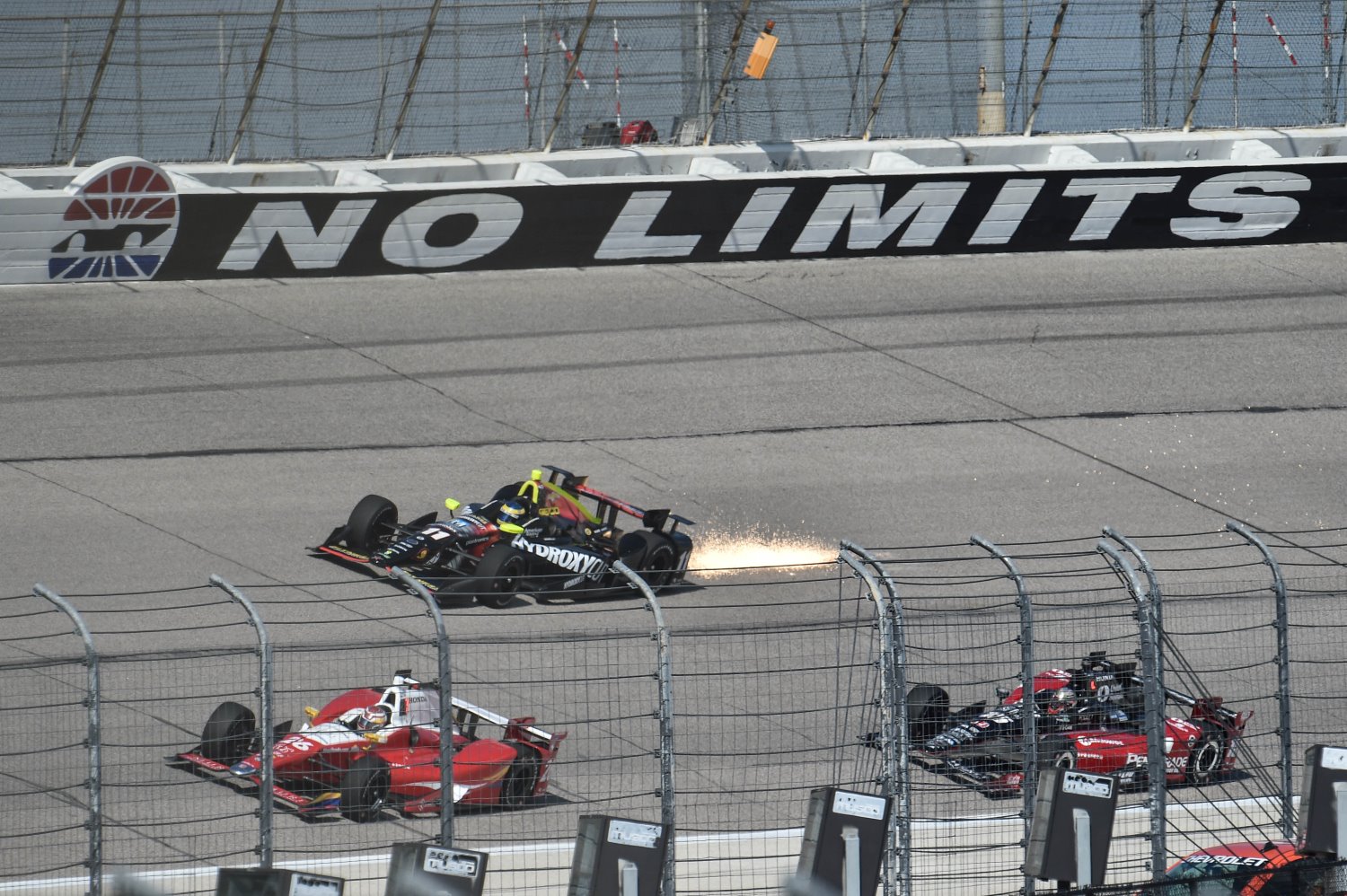Texas track changes causing uncertainty for Firestone
 |
| The bump at Texas was so severe it caused IndyCars to bottom out frequently |
Following a 2016 season in which both of the Texas NASCAR races were heavily delayed by rain, and the IndyCar race had to be postponed from June to August due to a drainage issue, track president Eddie Gossage has ordered a resurfacing process, expected to be completed within the next 10 days.
The reconfiguration will involve a revised track drainage system, the banking of Turns 1 and 2 reduced by four degrees, and the width of the racing surface increased from 60 to 80 feet.
Cara Adams, chief engineer and manager of race tire development at Firestone, told Motorsport.com: "We've been working with Texas Motor Speedway since they announced the repave and we’re getting core samples of the actual racetrack so we can scan it, analyze the macro and micro roughness, and look at the compounds that we’re bringing. We’ll bring several compounds and structures with us to the open test.
"The reduced banking and lower apron will make the racing different this year… not in a negative way, just different. And it will have a notable difference for us in terms of tire behavior.
"One of the major changes for us is the reduction of the bump in Turn 1. Because it had become so high, the teams had previously been running their cars with a lot of ride-height, which reduces the amount of downforce they had. In other words, the loads we were seeing on the tires were lower because of the bump.
"With the cars running in a more aero-efficient spec, we’d expect the tires to be working harder – offset somewhat by the reduced banking.
"So we’ll take the information we gather in the open test and do further investigations the following day, with one Chevrolet and one Honda, because we want a car representative of each aero package. And we want drivers who push the edge of tire performance." David Malsher/Motorsport
